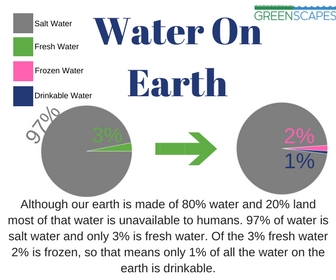Fresh Water is a Limited Resource

We need to make sure there is enough clean and plentiful water for people and the environment.
There are two major threats facing the Massachusetts water resources. First, drinkable water sources are finite. The more we use our drinkable water on our landscapes the less water available to sustain our rivers, streams and wetlands. Second, the water quality of our ponds, rivers and bays is impaired, and improvements are difficult and expensive.
Drinkable Water
Consider the amount of drinkable water that is being used to irrigate our landscapes. During the summer season, many communities are faced with water demands that are 2-3 times more than the winter season. Not only does this place a stress on the environment, but our water supply systems cannot keep up with demand. This can result in a loss of pressure and potentially cause safety concerns for firefighting. In addition, the more water we use, the more sources of water we will have to find and develop. The cost of developing new sources of water is large and those costs are transferred to consumers and citizens.
Keeping It Clean and Plentiful
Now consider the fertilizers, herbicides, insecticides and fungicides being used on our landscapes. Chemicals that are not immediately absorbed by plants in our landscapes can end up polluting our water through stormwater runoff. Excess nutrients either leach through the soil to the groundwater, or they are washed by rain into storm drains that lead to the nearest waterbody, contaminating our drinking water and causing rapid alga growth in ponds and bays.
Stormwater (aka hydrofilth) is becoming an ever-increasing cause of water degradation, primarily due to two causes: 1. the more we pave and build, the more water runs off carrying pollutants directly to rivers and streams and 2. our rain events are getting “flashier,” – more intense due to climate change, which exacerbates the amount of polluted runoff.





